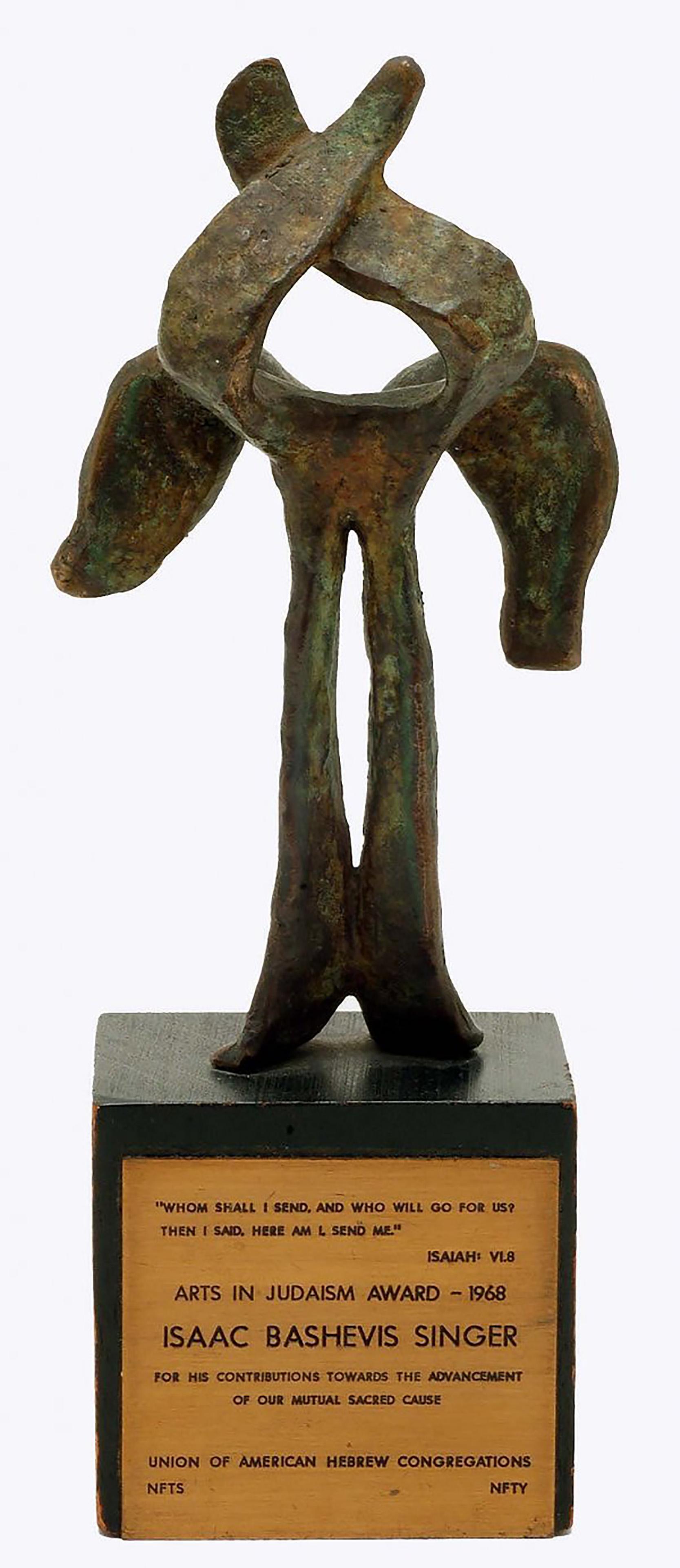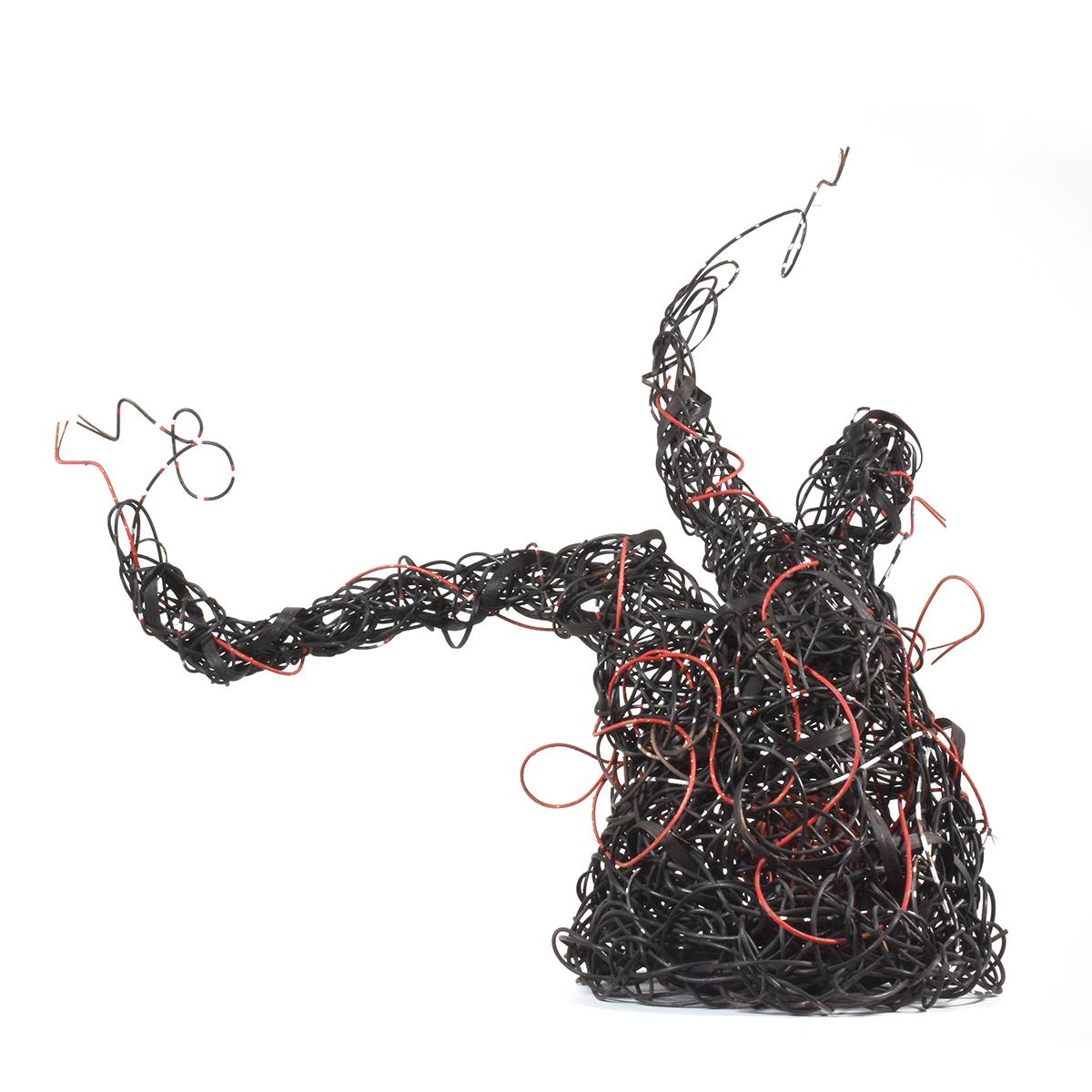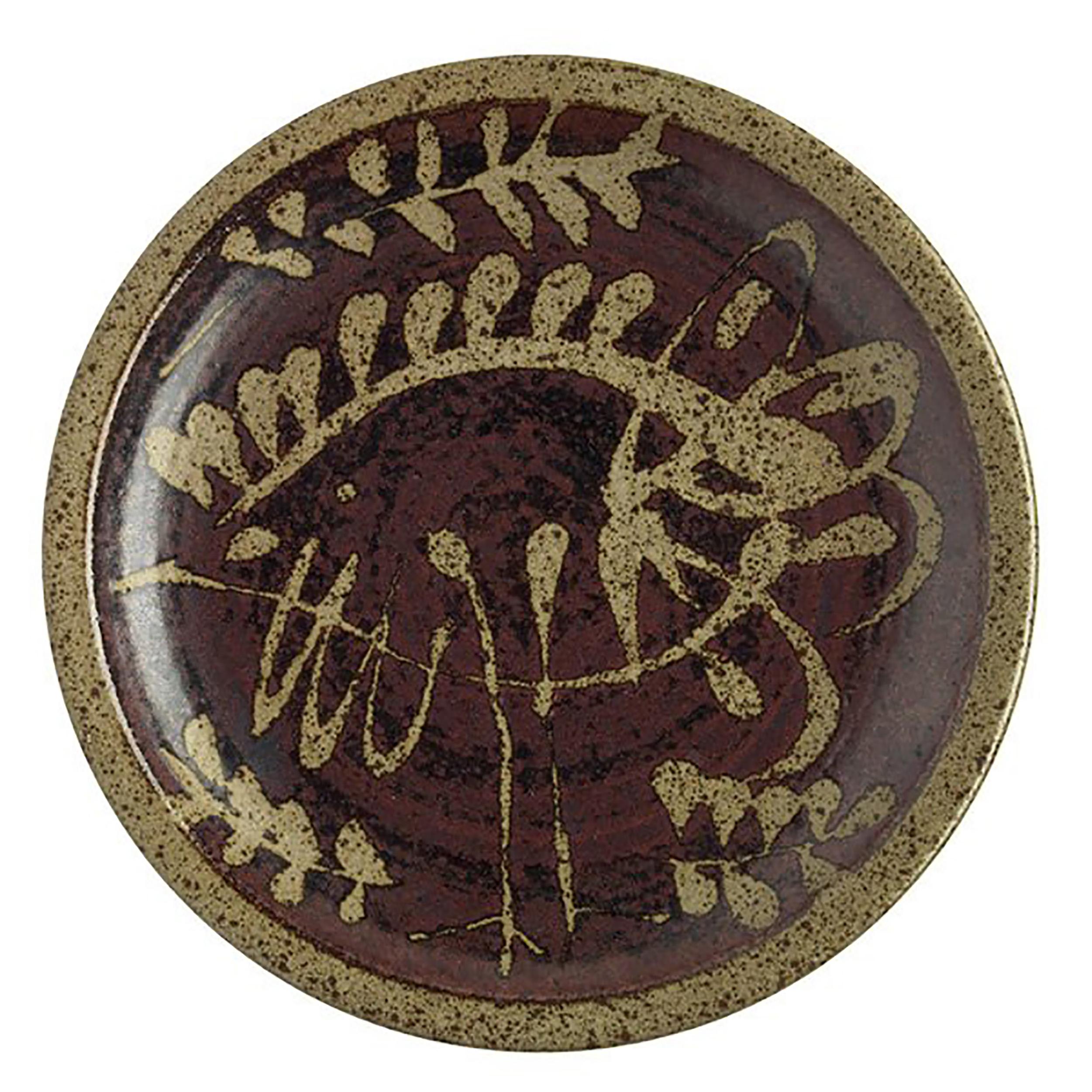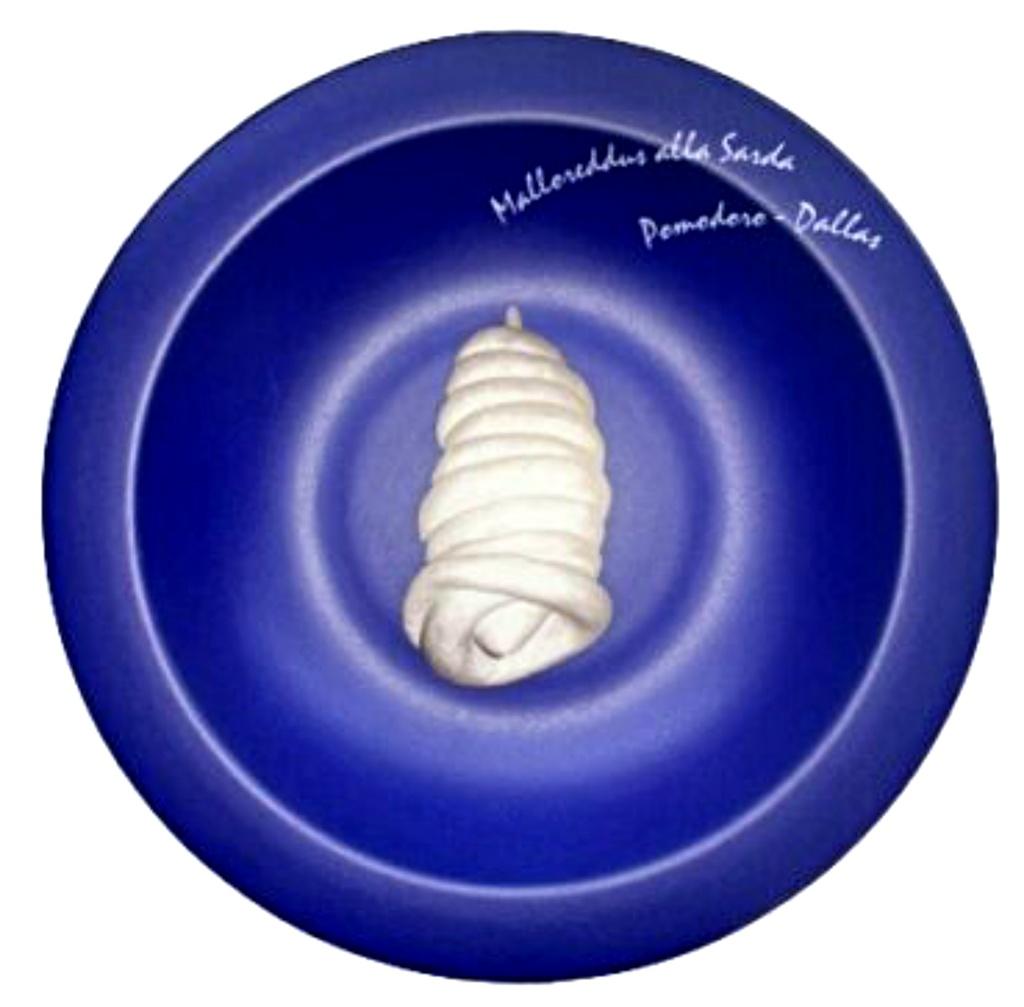Items Similar to Maquette for Laureate (unique sculpture)
Want more images or videos?
Request additional images or videos from the seller
1 of 3
Seymour LiptonMaquette for Laureate (unique sculpture)1968-1969
1968-1969
About the Item
Seymour Lipton
Maquette for Laureate, ca. 1968-1969
Nickel silver on monel metal
Unique
18 × 8 1/2 × 7 inches
Marlborough-Gerson Gallery, New York
Acquired from the above by the previous owner, 1969
thence by descent
Christie's New York: Monday, June 30, 2008 [Lot 00199]
Acquired from the above Christie's sale This unique sculpture by important Abstract Expressionist sculptor Seymour Lipton is a maquette of the monumental sculpture "Laureate" - one of Lipton's most iconic and influential works located on the Riverwalk in downtown Milwaukee, Wisconsin. Laureate is a masterpiece that was commissioned by the Allen-Bradley Company in memory of Harry Lynde Bradley and as an enhancement for the newly constructed Performing Arts Center. It is located on the east bank of the Milwaukee River at 929 North Water Street. The Bradley family in Milwaukee were renowned patrons of modernist sculpture, known for their excellent taste who also founded an eponymous sculpture park. For reference only is an image of the monumental "Laureate" one of Milwaukee's most beloved public sculptures. According to the Smithsonian, which owns a different unique variation of this work, "The full-size sculpture Laureate was commissioned by the Marcus Center for the Performing Arts in Milwaukee. In the initial drawings, Seymour Lipton combined details from the architectural plan with a wide variety of images, ranging from musical instruments to a lighthouse on the island of Tobago. He transformed the basic shapes from these sketches into a welded sculpture, which evokes a figure composed of columns, harp strings, and coiled rope. Lipton created this piece to celebrate achievement in the arts. The dramatic silhouette commands your attention, reflecting the title Laureate, which means worthy of honor and distinction. The final version of the piece is over twelve feet high and stands out against the pale, flat buildings of the arts center.,,"
Provenance
Marlborough-Gerson Gallery, New York
Acquired from the above by the previous owner, 1969
thence by descent
Christie's New York: Monday, June 30, 2008 [Lot 00199]
Acquired from the above Christie's sale
About Seymour Lipton:
Born in New York City in 1903, Seymour Lipton (1903-1986) grew up in a Bronx tenement at a time when much of the borough was still farmland. These rural surroundings enabled Lipton to explore the botanical and animal forms that would later become sources for his work. Lipton’s interest in the dialogue between artistic creation and natural phenomena was nurtured by a supportive family and cultivated through numerous visits to New York’s Museum of Natural History as well as its many botanical gardens and its zoos. In the early 1920s, with the encouragement of his family, Lipton studied electrical engineering at Brooklyn Polytechnic Institute and pursued a liberal arts education at City College. Ultimately, like fellow sculptor Herbert Ferber, Lipton became a dentist, receiving his degree from Columbia University in 1927. In the late 1920s, he began to explore sculpture, creating clay portraits of family members and friends.
In addition to providing him with financial security, dentistry gave Lipton a foundation in working with metal, a material he would later use in his artwork. In the early 1930s, though, Lipton’s primary sculptural medium was wood. Lipton led a comfortable life, but he was also aware of the economic and psychological devastation the Depression had caused New York. In response, he generally worked using direct carving techniques—a form of sculpting where the artist “finds” the sculpture within the wood in the process of carving it and without the use of models and maquettes. The immediacy of this practice enabled Lipton to create a rich, emotional and visual language with which to articulate the desperation of the downtrodden and the unwavering strength of the disenfranchised. In 1935, he exhibited one such early sculpture at the John Reed Club Gallery in New York, and three years later, ACA Gallery mounted Lipton’s first solo show, which featured these social-realist-inspired wooden works. In 1940, this largely self-taught artist began teaching sculpture at the New School for Social Research, a position he held until 1965.
In the 1940s, Lipton began to devote an increasing amount of time to his art, deviating from wood and working with brass, lead, and bronze. Choosing these metals for their visual simplicity, which he believed exemplified the universal heroism of the “everyman,” Lipton could also now explore various forms of abstraction. Lipton’s turn towards increasing abstraction in the 1940s allowed him to fully develop his metaphorical style, which in turn gave him a stronger lexicon for representing the horrors of World War II and questioning the ambiguities of human experience. He began his metal work with cast bronze sculptures, but, in 1946, he started welding sheet metal and lead. Lipton preferred welding because, as direct carving did with wood, this approach allowed “a more direct contact with the metal.”[ii] From this, Lipton developed the technique he would use for the remainder of his career: “He cut sheet metal, manipulated it to the desired shapes, then joined, soldered, or welded the pieces together. Next, he brazed a metal coating to the outside to produce a uniform texture.”[iii]
In 1950, Lipton arrived at his mature style of brazing on Monel metal. He also began to draw extensively, exploring the automatism that abstract expressionist painters were boasting at the time. Like contemporaries such as Jackson Pollock, Lipton was strongly influenced by Carl Jung’s work on the unconscious mind and the regenerative forces of nature. He translated these two-dimensional drawings into three-dimensional maquettes that enabled him to revise his ideas before creating the final sculpture.The forms that Lipton produced during this period were often zoomorphic, exemplifying the tension between the souls of nature and the automatism of the machine.
In the years following the 1950s, Lipton’s optimism began to rise, and the size of his work grew in proportion. The oxyacetylene torch—invented during the Second World War—allowed him to rework the surfaces of metal sculptures, thus eliminating some of the risks involved with producing large-scale finished works. In 1958, Lipton was awarded a solo exhibition at the Venice Biennale and was thus internationally recognized as part of a small group of highly regarded avant-garde constructivist sculptors. In 1960, he received a prestigious Guggenheim Award, which was followed by several prominent public commissions, including his heroic Archangel, currently residing in Lincoln Center’s David Geffen Hall.
A number of important solo exhibitions of his work followed at The Phillips Collection in Washington, DC (1964); the Milwaukee Art Center and University of Wisconsin, Milwaukee (1969); the Virginia Museum of Fine Arts in Richmond (1972); the Everson Museum in Syracuse, NY (1973); the Herbert E. Johnson Museum of Art of Cornell University in Ithaca, NY (1973); the National Collection of Fine Arts, Smithsonian Institution (now the Smithsonian American Art Museum) in Washington, DC (1978); and a retrospective in 1979 at The Jewish Museum in New York. In 1982 and 1984 alone, two exhibitions of his sculpture, organized respectively by the Mint Museum (Charlotte, NC) and the Hillwood Art Gallery of Long Island University (Greenvale, NY), traveled extensively across museums and university galleries around the nation. In 2000, the traveling exhibition An American Sculptor: Seymour Lipton was first presented by the Palmer Museum of Art of Pennsylvania State University in University Park. Most recently, in 2009, the Ackland Art Museum in Chapel Hill, NC mounted The Guardian and the Avant-Garde: Seymour Lipton’s Sentinel II in Context.
Since 2004, Michael Rosenfeld Gallery has been the exclusive representative of the Estate of Seymour Lipton and has presented two solo exhibitions of his work—Seymour Lipton: Abstract Expressionist Sculptor (2005) and Seymour Lipton: Metal (2008). In 2013, Michael Rosenfeld Gallery presented Abstract Expressionism, In Context: Seymour Lipton, which included twelve major sculptures by the artist, along with works by Charles Alston, Norman Bluhm, Beauford Delaney, Willem de Kooning, Jay DeFeo, Michael Goldberg, Adolph Gottlieb, Hans Hofmann, Lee Krasner, Norman Lewis, Conrad Marca-Relli, Boris Margo, Alfonso Ossorio, Richard Pousette-Dart, Milton Resnick, Charles Seliger, Alma Thomas, Mark Tobey, Jack Tworkov and Hale Woodruff.
Other notable group exhibitions in recent years include: Abstract Expressionist New York at the Museum of Modern Art in New York (2010); Encounters with the 1930s at the Museo Nacional Centro de Arte Reina Sofía in Madrid, Spain (2012); Its Surreal Thing: The Temptation of Objects at the Sheldon Museum of Art, University of Nebraska in Lincoln (2013); Abstraction: Drawings by Sculptors at The Metropolitan Museum of Art in New York (2015) and Marvelous Objects: Surrealist Sculpture from Paris to New York at the Hirshhorn Museum and Sculpture Garden in Washington, DC (2015). In 2018, the Art Gallery of Ontario in Toronto included Lipton’s work in the reinstallation of their permanent collection, Look:Forward.
Seymour Lipton’s works are in numerous museum collections worldwide including the Albright-Knox Art Gallery, Buffalo, NY; Arkansas Art Center, Little Rock, AR; Art Gallery of Ontario, Toronto, Canada; Baltimore Museum of Art, Baltimore, MD; Brooklyn Museum of Art, Brooklyn, NY; Cantor Art Center, Stanford University, Palo Alto, CA; Cleveland Museum of Art, Cleveland, OH; Columbus Museum of Art, Columbus, OH; Corcoran Museum of Art, Washington, DC; Crystal Bridges Museum of Art, Bentonville, AR; Dallas Museum of Art, Dallas, TX; Delaware Art Museum, Wilmington, DE; Denver Art Museum, Denver, CO; Des Moines Art Center, Des Moines, IA; Detroit Institute of Arts, Detroit, MI; Didrichsen Museum, Helsinki, Finland; Governor Nelson A. Rockefeller Empire State Plaza Art Collection, Albany, NY; Grey Art Gallery, New York University, New York, NY; Hammer Art Museum, Los Angeles, CA; Herbert F. Johnson Museum of Art, Cornell University, Ithaca, NY; Hillwood Art Museum, Long Island University, Brookville, NY; Hirshhorn Museum and Sculpture Garden, Smithsonian Institution, Washington, DC; The Jewish Museum, New York, NY; The Metropolitan Museum of Art, New York, NY; The Mint Museum of Art, Charlotte, NC; Mobile Museum of Art, Mobile, AL; Museum of Art, Rhode Island School of Design, Providence, RI; Museum of Fine Arts, Boston, MA; The Museum of Modern Art, New York, NY; The Nelson-Atkins Museum of Art, Kansas City, MO; National Gallery of Art, Washington, DC; Neuberger Museum of Art, Purchase College, State University of New York, Purchase, NY; New Britain Museum of Art, New Britain, CT; New Orleans Museum of Art, New Orleans, LA; Newark Museum, Newark, NJ; Oklahoma City Museum of Art, Oklahoma City, OK; Pennsylvania Academy of Fine Arts, Philadelphia, PA; Philadelphia Museum of Art, Philadelphia, PA; The Phillips Collection, Washington, DC; Phoenix Art Museum, Phoenix, AZ; Portland Art Museum, Portland, OR; San Diego Museum of Art, San Diego, CA; San Francisco Museum of Modern Art, San Francisco, CA; San José Museum of Art, San José, CA; Santa Barbara Museum, Santa Barbara, CA; São Paulo Museum, São Paulo, Brazil; Smithsonian American Art Museum, Washington, DC; Tamayo Museum, Mexico City, Mexico; Tel Aviv Museum, Tel Aviv, Israel; Tucson Museum of Art, Tucson, AZ; Virginia Museum of Fine Art, Richmond, VA; Wadsworth Atheneum Museum of Art, Hartford, CT; Whitney Museum of American Art, New York, NY; Wichita Art Museum, Wichita, KS; and Yale University Art Gallery, New Haven, CT.
- Courtesy of Micheal Rosenfeld
- Creator:Seymour Lipton (1903 - 1986, American)
- Creation Year:1968-1969
- Dimensions:Height: 18 in (45.72 cm)Width: 8.5 in (21.59 cm)Depth: 7 in (17.78 cm)
- Medium:
- Movement & Style:
- Period:
- Condition:
- Gallery Location:New York, NY
- Reference Number:1stDibs: LU1745214379432
Seymour Lipton
Seymour Lipton was an American abstract expressionist sculptor. He was a member of the New York School who gained widespread recognition in the 1950s. His early choices of medium changed from wood to lead and then to bronze, and he is best known for his work in metal. He made several technical innovations, including brazing nickel-silver rods onto sheets of Monel to create rust resistant forms. Through the medium of metal sculpture, Lipton endeavored to portray the inner complexities of the human psyche through shapes that enclose and oppose each other, interrelating convex and concave, solid and hollowed forms. Although his imagery was often based on visual stimuli, his expressive abstractions were never literal translations of the visible world. He altered and arranged shapes to create sculptures symbolizing intangible, universal concepts absorbed from sociology, psychology, and myth.
About the Seller
5.0
Platinum Seller
These expertly vetted sellers are 1stDibs' most experienced sellers and are rated highest by our customers.
Established in 2007
1stDibs seller since 2022
299 sales on 1stDibs
Typical response time: 1 hour
- ShippingRetrieving quote...Ships From: New York, NY
- Return PolicyA return for this item may be initiated within 1 day of delivery.
More From This SellerView All
- Bronze Sculpture to Isaac Bashevis Singer, Arts in Judaism Award signed JudaicaBy Nathaniel KazLocated in New York, NYNathaniel Kaz Bronze Sculpture to Isaac Bashevis Singer for Arts in Judaism Award, 1966 Bronze, Square wooden base, Metal tag Signed and dated "66" to back of bronze portion of the w...Category
1960s Abstract Expressionist Abstract Sculptures
MaterialsMetal, Bronze
- Ceramic Sculptural bowl hand signed by renowned sculptor and ceramicistBy Peter VoulkosLocated in New York, NYPeter Voulkos Ceramic Sculptural Dish, ca. 1985 Sculpted ceramic Hand-signed by artist, Incised signature on the base. 1.5 x 11.5 inches This charger plate by Voulkos features a Greek-influenced stylized birds and leaf design. Peter Voulkos is an American artist of Greek descent. The abstraction of animal and nature elements paired with the earthy, mottled gray and brown against brown background make this work beautiful. This work was featured in the exhibition "On Black Mountain: The Bauhaus Legacy in America", at the Sager Braudis Gallery (now Sager Reeves), in Columbia Missouri from April 5, 2019 to April. 27, 2019 and is reproduced in page 53 of the exhibition catalogue. We will provide a complimentary copy of the exhibition catalogue to the buyer of this work. Born in 1924 to Greek immigrant parents in the town of Bozeman, Montana, Peter Voulkos is one of America’s most significant sculptors of the 20th century. Voulkos got his start in art in the late 1940s, when he was studying at Montana State College, Bozeman on the G.I. Bill, after being drafted and serving as an airplane armorer-gunner in the Pacific in World War II. In classes with Frances Senska, he discovered ceramics, the medium that would characterize his career. After graduating from Montana State College, Bozeman in 1951, Voulkos moved west and earned his MFA from the California College of Arts and Crafts in Oakland, California. Returning to Montana after graduation, Voulkos attracted attention “as a prodigious natural potter and a producer of elegantly thrown functional earthenware,” according to Roberta Smith for the New York Times. He also produced dinnerware to sell through high-quality stores, and was noted for his wax-resist method of decoration.Voulkos gained a reputation as a master of ceramics techniques, winning twenty-nine prizes and awards from 1949 through 1955. However, a summer spent teaching at the experimental Black Mountain College (he was invited to teach at BMC by Karen Karnes) near Asheville, North Carolina in 1953 resulted in a dramatic shift in Voulkos’s artistic priorities, as well as his aesthetic. It was at Black Mountain College that Voulkos met Robert Rauschenberg, John Cage, Merce Cunningham and Charles Olson. He then visited New York City (as a guest of pianist David Tudor and Mary Catherine Richards) and encountered Philip Guston, Willem de Kooning and Franz Kline—Abstract Expressionist painters who influenced the new direction Voulkos would go on to pursue. In 1954, Voulkos was invited to teach at the Los Angeles County Art Institute (now Otis), and he established a new ceramics department and graduate program that attracted other young artists including John Mason, Ken Price, Billy Al Bengston and Paul Soldner. It was here that, inspired by the scale and spontaneity of the New York School, Voulkos began to build progressively larger works that cast aside utility and abandoned ceramic conventions. Decoration became aggressive, as he slashed at and pierced the clay, which he then energetically painted with glaze. Peter Voulkos exhibited these new works in shows at the Landau Gallery in Los Angeles, which announced to the world a new way of approaching ceramics. Disagreements with the more conservative administrators of the LA County Art Institute led to Voulkos’s departure for the University of California, Berkeley, in 1959. While at Berkeley, Voulkos experimented with bronze and produced large-scale bronze sculpture, while continuing his ceramic work and doing demonstrations of ceramics throughout the U.S. In 1979, a young ceramist named Peter Callas...Category
1980s Abstract Expressionist Abstract Sculptures
MaterialsGlaze, Mixed Media, Ceramic
- Limited Edition numbered Italian Blue Ceramic Plate for Dallas Texas restaurantBy Louise BourgeoisLocated in New York, NYLouise Bourgeois Limited Edition Ceramic Plate depicting Malloreddus alla Sarda, Dallas Texas, 1998 Ceramic Plate 10 in diameter Edition 457/1000 (read description; the edition was not completed) Unframed (Stand shown is not included) Makes a memorable gift! This striking, rare limited edition, signed and numbered bowl/plate was handmade in southern Italy by master artisans near Vietri sul Mare. It was designed by renowned American artist Louise Bourgeois. From the late 1990s through the millenium, Buon Ricordo...Category
1990s Abstract Expressionist Mixed Media
MaterialsCeramic, Porcelain, Screen, Mixed Media
- New York State Governor's Arts Award, unique signed painted bronze sculptureBy Nancy GravesLocated in New York, NYNancy Graves New York State Governor's Arts Award, 1988 Bronze, polychrome patina and baked enamel on base with Award plaque 10 1/4 × 7 × 10 1/4 inches Ha...Category
1980s Abstract Expressionist Abstract Sculptures
MaterialsBronze, Enamel
- Untitled signed sculpture, from the collection of Dick Polich, Tallix FoundryBy Stephen TalasnikLocated in New York, NYStephen Talasnik Untitled sculpture, from the collection of Dick Polich, Tallix Foundry, ca. 1997 Cast light metal signed by the artist on the work (see close up photograph) 6 3/5 × 12 × 4 inches Provenance Estate of Dick Polich, founder of the legendary Tallix Foundry and Polich Art works Beacon, NY Manufacturer Stephen Talasnik at Tallix Foundry, Beacon, New York This work is signed by the artist (see close up photograh) Abstract metal sculpture The work is lightweight so it is believed to be in aluminum or an aluminum alloy, Provenance: acquired from the Estate of Dick Polich - founder of the legendary Tallix foundry and Polich Art Works. Polich and Tallix fabricated significant sculptural works over many years, collaborating with such as, Willem de Kooning, Jeff Koons, Roy Lichtenstein, Frank Stella, Helen Frankenthaler, ERTE, Julian Schnabel, Richard Artschwager, Isamu Noguchi, Isaac Witkin...Category
1990s Abstract Expressionist Abstract Sculptures
MaterialsMetal
- Yellow DiscBy Phillip KingLocated in New York, NYPhillip King Yellow Disc, 2007 Hand painted steel on a marble base Signed and numbered 21/35 on base. Provenance: Bernard Jacobson Gallery, London Private Collection, UK 5 3/5 × 12 × 8 1/5 inches This work was created by the British sculptor Phillip King, student of the famous Sir Anthony Caro. Like Caro and Isaac Witkin...Category
Early 2000s Abstract Abstract Sculptures
MaterialsMarble, Steel
You May Also Like
- Brutalist Bronze Abstract Modernist SculptureLocated in Surfside, FLIn the manner of Julio Gonzalez, mixed metal sculpture. Neo-Dada Abstract Sculpture: Assemblages Abstract sculpture followed a slightly different course. Rather than focusing on non-figurative subject matter, it concentrated on materials, hence the emergence of Assemblage Art - a form of three-dimensional visual art made from everyday objects, said to be 'found' by the artist (objets trouves). Popular in the 1950s and 1960s in America, assemblage effectively bridged the gap between collage and sculpture, while its use of non-art materials - a feature of Neo-Dada art - anticipated the use of mass-produced objects in Pop-Art. Assemblage sculpture is exemplified by the works of Louise Nevelson (1899-1988), such as Mirror Image 1 (1969, Museum of Fine Arts, Houston), and by Jean Dubuffet (1901-85) and his Monument with Standing Beast (1960, James R. Thompson Center, Chicago). The idiom was considerably boosted by an important exhibition - "The Art of Assemblage" - at the Museum of Modern Art, in New York, in 1961. Other examples of the Neo-Dadaist-style "junk art...Category
20th Century Abstract Expressionist Abstract Sculptures
MaterialsBronze, Copper
- Danielle Bodine "Medusa Tree" Mixed Media, Abstract Free Form SignedLocated in Detroit, MISALE ONE WEEK ONLY "Medusa Tree" is a free-flowing sculpture of cane that suggests a figure either emerging from or descending into a tangle of twisting lines. Several parts are painted red or blue or stripped that gives a contrast to the black structure and a spark of energy shooting forth. This piece seems experimental from her more conservative pieces that can be easily identified as basketry, paper forms and shaped objects. Danielle Bodine...Category
1990s Abstract Expressionist Abstract Sculptures
MaterialsMixed Media
- Tea Party #3By Sasson SofferLocated in New York, NYAbstract stainless steel pipe sculpture with beautifully detailed surface. Can be inside or outside. About the Artist: Famous abstract expressionist. Soffer was born in Bagh...Category
1980s Abstract Expressionist Abstract Sculptures
MaterialsStainless Steel
- Tea Party SeriesBy Sasson SofferLocated in New York, NYAbstract stainless steel pipe sculpture with beautifully detailed surface. Can be inside or outside. About the Artist: Famous abstract expressionist. Soffer was born in Bagh...Category
1980s Abstract Expressionist Abstract Sculptures
MaterialsStainless Steel
- Front City Mid-20th Century Abstract Gold Patinated Bronze Italian SculptureLocated in Brescia, ITThis gold color patinated bronze sculpture is made by Lino Tinè a contemporary abstract sculptor that lives and works in Milan, Italy. The sculpture expresse...Category
Late 20th Century Abstract Expressionist Abstract Sculptures
MaterialsBronze
- SpiralBy Paul von RingelheimLocated in Long Island City, NYArtist: Paul von Ringelheim, Austrian/American (1933 - 2003) Title: Spiral 1 Medium: Painted Flame-Cut Steel Sculpture Size: 47 x 52 x 8 in. (119.38 x 132.08 x 20.32 cm)Category
1970s Abstract Expressionist Abstract Sculptures
MaterialsSteel
Recently Viewed
View AllMore Ways To Browse
Unique Sculpture
Sculptures For The Garden
Feet Sculpture
Sculptures Of Feet
Wood Stand For Sculpture
Vintage Mexican Sculpture
Metal Family Sculpture
Small Brass Sculpture
Fine Silver Sculpture
Modern British Sculpture
Abstract Sculpture On Stand
Large Crystal Sculptures
Small Silver Sculptures
Brazilian Modern Sculpture
Mexican Metal Sculpture
Abstract Crystal Sculptures
Garden Figure Sculpture
Garden Sculpture Figural






